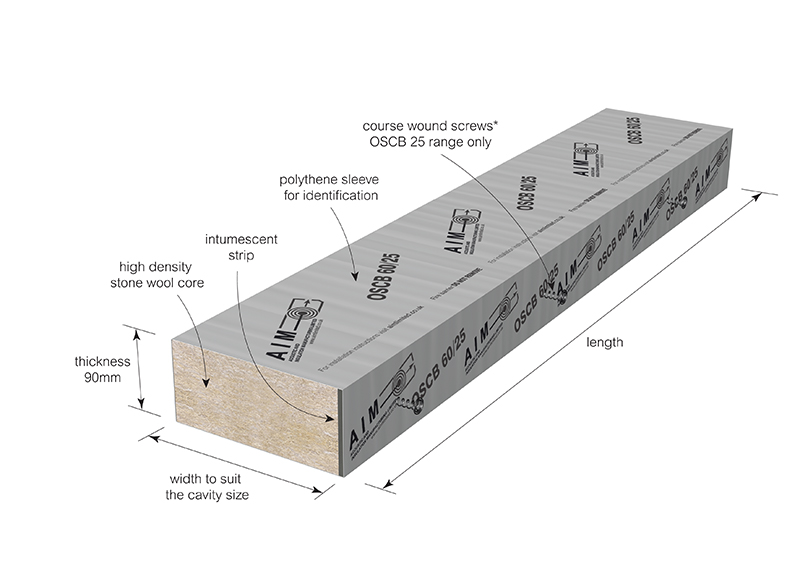
Image Source: Google
Fires can be devastating, especially when they occur in residential homes. One of the key ways to protect your home and your loved ones is by fireproofing your property. Cavity barriers are an essential component of fire safety systems in buildings, as they help prevent the spread of fire and smoke through concealed spaces within the structure.
In this guide, we will explore the importance of cavity barriers in fireproofing your home and provide you with essential tips on how to ensure your property is adequately protected.
The Importance of Cavity Barriers
Cavity barriers are a crucial element in fire safety systems, particularly in residential buildings where fires can spread rapidly. These barriers are designed to prevent the spread of fire and smoke through concealed spaces, such as wall cavities and ceiling voids, helping to contain the fire and give occupants more time to evacuate safely. Here are some key reasons why cavity barriers are important in fireproofing your home:
Preventing the Spread of Fire
- Cavity barriers act as a barrier to the spread of fire, helping to contain it within a specific area of the building.
- By restricting the movement of flames and smoke, cavity barriers can prevent the rapid spread of fire to other parts of the property.
Protecting Escape Routes
- Cavity barriers help to protect the escape routes in a building, such as stairwells and corridors, by preventing the spread of fire and smoke to these areas.
- This gives occupants more time to evacuate the building safely in the event of a fire.
Compliance with Building Regulations
- Many building regulations require the installation of cavity barriers in certain types of buildings to ensure fire safety compliance.
- By installing cavity barriers in your home, you can ensure that your property meets the necessary safety standards.
Types of Cavity Barriers
There are various types of cavity barriers available, each designed for specific applications and configurations within a building. Understanding the different types of cavity barriers can help you choose the right products for your home. Here are some common types of cavity barriers:
Vertical Cavity Barriers
- Installed vertically within wall cavities to prevent the vertical spread of fire.
- Helps to compartmentalize the building and prevent the spread of fire between floors.
Horizontal Cavity Barriers
- Installed horizontally within ceiling voids to prevent the horizontal spread of fire.
- Ensures that fire and smoke do not spread across the ceiling to other parts of the building.
Masonry Cavity Barriers
- Constructed from non-combustible materials such as stone or concrete to provide a high level of fire resistance.
- Used in masonry constructions to prevent the spread of fire through cavities in walls.
Installation and Maintenance
Proper installation and regular maintenance of cavity barriers are essential to ensure their effectiveness in fireproofing your home. Here are some tips for installing and maintaining cavity barriers:
Professional Installation
- Ensure that cavity barriers are installed by qualified professionals with experience in fire safety systems.
- Proper installation is crucial to the effectiveness of cavity barriers in containing fires.
Regular Inspections
- Inspect cavity barriers regularly to check for any signs of damage, deterioration, or obstructions.
- Address any issues promptly to maintain the integrity of the barriers.
Replacement as Needed
- If cavity barriers are damaged or no longer effective, consider replacing them with new barriers to ensure continued fire protection.
- Do not compromise on the safety of your home by neglecting damaged cavity barriers.
Additional Fireproofing Measures
While cavity barriers play a significant role in fireproofing your home, there are other measures you can take to enhance fire safety. Here are some additional fireproofing tips:
Smoke Alarms
- Install smoke alarms on every level of your home and inside each bedroom for early detection of smoke or fire.
- Test smoke alarms regularly and replace batteries as needed to ensure they are fully functional.
Fire Extinguishers
- Keep at least one fire extinguisher in an easily accessible location in your home.
- Know how to use a fire extinguisher properly and conduct regular checks to ensure it is in working condition.
Escape Plan
- Create a fire escape plan for your family, including designated escape routes and a meeting point outside the home.
- Practice your fire drill regularly to ensure everyone knows what to do in case of a fire.
By following these fireproofing tips and ensuring the proper installation and maintenance of cavity barriers in your home, you can enhance the safety of your property and protect your loved ones from the devastating effects of fires.